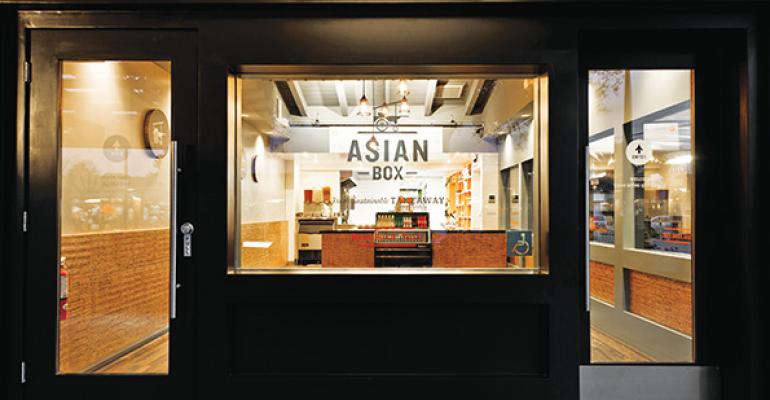Restaurateur and foodservice consultant Frank Klein co-founded Asian Box in 2012 after identifying a need that wasn’t being fulfilled.
With its cooked-to-order, highly customizable menu, the San Francisco-based fast-casual brand, which Nation’s Restaurant News named a Breakout Brand in 2013, seeks to provide healthful, efficient Asian cuisine at a price point of under $10, including a beverage. It’s a model that none of its competitors has been able to do quite right, president and chief executive Klein told Nation’s Restaurant News.
Klein and his partners recently opened their fourth location and plan to double their unit count by the end of 2015, including locations that are experimenting with local beer and wine.
In a recent interview, Klein discussed the competitive fast-casual segment, the brand’s plan for growth and why he thinks consumers are so responsive to Asian cuisine.
Asian Box just opened its fourth location in Los Angeles. What is your plan for growth?
Our fifth store will open in mid-September in downtown Los Angeles, then we plan to be opening up between four and six stores in each of the subsequent three years.
Why do you think Asian cuisine strikes a chord with consumers?
I think there is a more educated palate and a broader demographic across the country. People are looking for food with more flavor and they can take more spice than they used to. There is also a more healthful approach to eating. Asian food, if it is done right, offers a more healthful lifestyle choice when it comes to eating. There is also a lot of choice and a lot of customization. Plus, who isn’t tired of going to a burger and pizza joint?
How are the restaurants performing?
All our stores are performing extremely well, and they are performing differently. The first four stores are very different sizes and in different locations. We’re not doing the cookie-cutter, all stores are the same thing, yet. Right now, we are testing different markets and different footprints of stores to see which one we want to scale. Our first four stores are all having a different degree of success, based on where they are in the footprint, but we’ve been very happy so far.
Who is your competition?
We don’t look at it as Asian competition, but as competition for dollars. We look at our competition as people that are serving the same kind of great ingredients that we are serving, at a reasonable price point to a knowledgeable, food-oriented purchaser as opposed to a value-oriented purchaser. So places like Mendocino Farms, Tender Greens and, as we go into other markets, Sweetgreen.
How are you driving dinner traffic?
We’ve launched a concept called Bar in The Box, which will offer beer and wine, and we are doing a very aggressive pricing strategy with boutique wines and some great California producers. We are trying to drive dinner traffic with just a short, amazingly-priced wine list with some wines by the glass and wines on tap. We feel we can take more dinner traffic from other Asian sit-down restaurants that are at a higher price point.
When will Bar in The Box debut?
We are launching them in mid-September in San Francisco and Mountain View, Calif.
Fast casual is a rapidly expanding segment. What are your biggest challenges as you expand?
Real estate is getting very competitive in all the markets for healthy fast casual. As more and more people get in the space, it’s getting harder to find the prime spaces. In Los Angeles there are far too many good, qualified fast-casual operators that are looking for space right now.
The other thing on our mind is that we are waiting for the government to reward job creators instead of penalizing people. As we grow we’ve adjusted our economics. We’ve never paid minimum wage. In fact, we pay well above minimum wage. We are just concerned with everything the government is doing right now. In our opinion, it seems like they are doing everything they can to stop or stifle job creation. People should be rewarded for creating jobs. Myself and my fellow very-legitimate fast-casual employers will probably be financially hurt in the next three to five years.




